CCTV (Closed-Circuit Television) systems have been a staple in security for decades, providing real-time monitoring and recorded footage for later review. However, with advancements in technology, CCTV has evolved far beyond simple video recording. Enter CCTV video analytics – a powerful tool that transforms passive video streams into actionable data.
This article delves into the types of CCTV video analytics, their various applications, and how they can be utilised across multiple departments, including marketing, security, facilities management, and health and safety.
Types of CCTV Video Analytics
CCTV video analytics refers to the automated process of analysing video footage to detect, track, and respond to various events. Here are some common types of video analytics:
- Motion Detection: Detects movement in predefined areas, triggering alerts for further action.
- Object Recognition: Identifies specific objects, such as vehicles or persons, within the video stream.
- Facial Recognition: Matches faces in the video against a database to identify individuals.
- License Plate Recognition (LPR): Reads vehicle number plates to track and manage access.
- People Counting: Counts the number of individuals entering or leaving an area, useful for crowd management.
- Behavioural Analysis: Monitors and detects unusual behaviour, such as loitering or aggressive actions.
- Heat Mapping: Tracks movement patterns within a space, visualising areas with the highest activity.
- Intrusion Detection: Alerts when unauthorised entry into a restricted area is detected.
These analytics can be applied in real-time or retrospectively, providing both immediate responses and valuable insights for future decision-making.
Uses of CCTV Video Analytics Across Departments
CCTV video analytics offer significant benefits across various departments. Below, we explore how these systems can support marketing, security, facilities management, and health and safety.
1. Marketing
In the marketing realm, CCTV video analytics can be a goldmine of customer data. By using tools like people counting and heat mapping, businesses can gain insights into customer behaviour, which can be leveraged to enhance the shopping experience and drive sales.
- People Counting: Retail stores can use people counting analytics to determine the busiest times of day, which helps in optimising staff allocation and managing peak periods. This data can also inform marketing strategies, such as timing promotions during high-traffic periods to maximise impact.
- Heat Mapping: By analysing heat maps, stores can identify which areas receive the most foot traffic. This information can guide the placement of products and promotional displays to attract customers’ attention, potentially increasing sales.
Example: A large retail chain in Sydney used heat mapping to discover that a particular aisle had significantly less traffic than others. By relocating a popular product to this aisle and implementing targeted promotions, they managed to increase footfall in the area by 30%.
2. Security
The primary use of CCTV video analytics is in enhancing security measures. These systems provide automated alerts for potential security breaches, helping to prevent incidents before they escalate.
- Intrusion Detection: Security systems can be programmed to alert staff when someone enters a restricted area. This is particularly useful in facilities like banks, airports, or data centres where unauthorised access could have severe consequences.
- Facial Recognition: This tool is valuable for identifying known criminals or persons of interest as they enter a premise, enabling swift response by security personnel.
Example: A Melbourne airport implemented facial recognition analytics to monitor for individuals on a security watchlist. This system allowed security teams to intercept a wanted individual as they attempted to enter a restricted area, potentially averting a serious security breach.
3. Facilities Management
Facilities management is another area where CCTV video analytics can have a profound impact. These systems help optimise the use of space, manage resources more effectively, and ensure the smooth operation of building infrastructure.
- People Counting: Analytics can help facilities managers understand occupancy levels in different areas, which can inform decisions on HVAC (heating, ventilation, and air conditioning) usage, lighting, and cleaning schedules.
- Object Recognition: This can be used to monitor the movement of equipment or track assets within a facility, ensuring that valuable items are not misplaced or stolen.
Example: A university in Brisbane used people counting analytics to monitor library occupancy. During peak exam periods, they adjusted the HVAC system to maintain optimal comfort levels, reducing energy costs by 15% while keeping the environment conducive to studying.
4. Health and Safety
In the domain of health and safety, CCTV video analytics can help prevent accidents and ensure a safer environment for employees and visitors. By monitoring real-time video feeds, these systems can detect potential hazards and alert relevant personnel to take immediate action.
- Trip and Fall Detection: Analytics can identify when a person trips or falls, triggering an alert to prompt a swift response, potentially preventing further injury or escalation of the incident.
- Object Detection: Systems can monitor for objects that may have fallen or been left in hazardous locations, such as in a walkway, where they could cause accidents.
Example: A manufacturing plant in Perth implemented trip and fall detection analytics to monitor the production floor. When a worker slipped on a wet surface, the system immediately alerted the on-site health and safety team, who were able to provide assistance within minutes, reducing the severity of the injury.
Advantages of CCTV Video Analytics
CCTV video analytics offers numerous advantages, making it an essential tool for modern businesses and organisations. Here are some key benefits:
- Real-Time Monitoring: Automated alerts ensure that incidents are detected and addressed promptly, reducing response times and mitigating potential risks.
- Data-Driven Decisions: Analytics provides valuable data that can be used to inform decisions across various departments, from marketing to facilities management.
- Cost Efficiency: By automating monitoring processes, businesses can reduce the need for extensive human resources while improving the accuracy and effectiveness of their security and management operations.
- Scalability: CCTV video analytics systems can be scaled to fit the needs of any organisation, from small businesses to large enterprises.
Challenges and Considerations
While CCTV video analytics offers numerous benefits, there are also challenges and considerations to keep in mind. These include:
- Privacy Concerns: The use of facial recognition and other forms of surveillance can raise privacy issues, especially in public spaces. It’s crucial to ensure that these systems comply with relevant privacy laws and regulations in Australia.
- False Positives: Like any automated system, CCTV analytics can sometimes produce false positives, where an alert is triggered by a non-threatening event. This can lead to unnecessary responses and needs to be carefully managed.
- Integration with Existing Systems: Implementing video analytics may require integration with existing CCTV systems, which can be complex and costly. It’s essential to work with experienced providers to ensure a smooth transition.
Conclusion
CCTV video analytics is a transformative technology that extends the functionality of traditional CCTV systems far beyond simple video recording.
By harnessing the power of analytics, organisations can enhance security, optimise operations, improve marketing efforts, and ensure a safer environment for everyone. Whether it’s identifying potential security threats, optimising foot traffic in retail spaces, or preventing accidents in industrial settings, the applications of CCTV video analytics are vast and varied.
As Australian businesses continue to embrace digital transformation, the adoption of CCTV video analytics is likely to grow, offering new opportunities for efficiency, safety, and customer engagement.
While challenges such as privacy concerns and system integration need to be carefully managed, the benefits far outweigh the drawbacks, making CCTV video analytics a valuable investment for the future.
By leveraging the insights and capabilities of these advanced systems, organisations can stay ahead of the curve, ensuring that they not only protect their assets and people but also make data-driven decisions that drive success in a competitive landscape.



